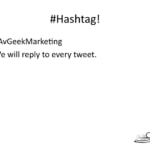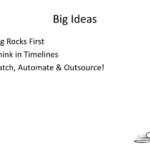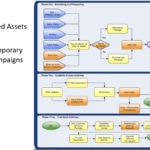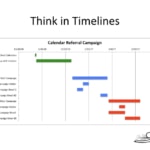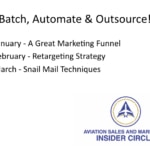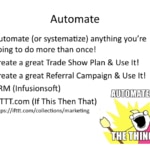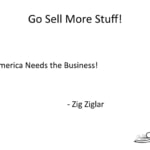Now is the very best time to take a step back from the day-to-day craziness of an aviation sales and marketing department and look forward. Having a great aviation marketing calendar helps keep your costs low, keep surprises to a minimum, and ensure you meet your sales goals next year without Herculean effort or massive stress and pressure
Now is the very best time to take a step back from the day-to-day craziness of an aviation sales and marketing department and look forward. Having a great aviation marketing calendar helps keep your costs low, keep surprises to a minimum, and ensure you meet your sales goals next year without Herculean effort or massive stress and pressure
Transcript – How to Plan a Year of Successful Marketing
[MUSIC]
 Announcer: You’re listening to aviation marketing Hangar Flying. The community for the best sales and marketing professionals in the aviation industry. You can’t learn to fly just from a book. You learn from other pilots who know the tools, the skills and the territory. Your hosts, John and Paula Williams, are your sales and marketing test pilots.
Announcer: You’re listening to aviation marketing Hangar Flying. The community for the best sales and marketing professionals in the aviation industry. You can’t learn to fly just from a book. You learn from other pilots who know the tools, the skills and the territory. Your hosts, John and Paula Williams, are your sales and marketing test pilots.
They take the risks for you and share strategies, relevant examples, HECs, and how to’s. Be sure to subscribe on iTunes so you won’t miss a thing.
Paula Williams: Welcome to aviation marketing Hangar Plane, episode number 62, planning a year of successful marketing, or an aviation marketing calendar. So I’m Paula Williams.
John Williams: I’m John Williams.
Paula Williams: And we are a ABCI and ABCI’s Mission Is:
John Williams: Is to help all you ladies and gentlemen out there sell more products and services in the aviation world
Paula Williams: Absolutely.
John Williams: 62 is more, we do these one a week, right?
Paula Williams: [LAUGH] We started last year.
John Williams: Wow.
Paula Williams: Yeah, that’s a lot of episodes. So-
John Williams: Maybe we can make a movie? [LAUGH]
Paula Williams: Maybe we could make a movie! [LAUGH] Exactly, no kidding. If you have questions, comments, or anything else about this episode or any other, use the hashtag #avgeekmarketing, that’s A-V-G-E-E-K marketing in Instagram, Twitter, whatever you use.
Or you can just post your comments on our website and we will make sure we get back to you with a hopefully good response, right?
John Williams: Of course.
Paula Williams: Absolutely, okay. So when you’re planning a year of successful marketing, that is a big daunting task, right?
John Williams: Well, unless you did it the previous year, in which case it’s a lot easier the second time around.
Paula Williams: That’s true. I mean, you can start with your aviation marketing calendar or outline from last year and improve upon it. But assuming you’re starting from scratch, or even if you were starting with something else, we’ve got three big ideas that really help with your aviation marketing calendar. The first one is you wanna do your big rocks first.
The second is that you want to think in terms of timelines. And three, you want to batch, automate and outsource, right?
John Williams: Yep.
Paula Williams: Okay, so first of all, let’s talk about the big rocks first. This is a thing that Stephen Covey did in a presentation. I have heard that other people have done variations of this, and I don’t know who did it first.
I don’t know who has that claim to patent the idea, if there is one. But if you take two mason jars, and you have an equal amount of rocks, pebbles, and sand. And either water or beer, depending on which version you’re [LAUGH] using of this metaphor. There are two ways of going about filling the same volume of rocks, pebbles and sand into this mason jar.
And you can see if you’re seeing the picture here, the one on the left-hand side, what they did is they poured all the sand in first. And then they poured in all the pebbles and then they tried to cram in the big rocks last. Didn’t work very well, right?
John Williams: Well, it seems common sense to some people, but if you’ve never experienced this before or anything like it, you probably might not get it. But you should listen to this or watch this sometime so you get this picture somehow. It’s quite interesting.

This printed calendar is what our Insiders use to keep track of shows, events, and other important aviation industry marketing dates.
Paula Williams: Right, and you can actually try this at home.
[LAUGH] If you get the right amount of materials and things like that. The other way to do it, of course, and the way this metaphor works basically is the way that most people live their lives. 99% of the people on the planet are just responding to little tiny things every single day.
They get up and they check their email, and they chase their rabbit, and the phone rings, and they chase another rabbit, and they do all of these little things that really don’t matter all that much in the grand scheme of things. They’re what they call urgent, but not important things, and those are represented by the sand here.
And then the medium things would be things like specific tasks and other things that they have. And they get those done before they leave for the day because they have to. But the big things like working on large projects, working on books, working on marketing campaigns, working on things that are, I’d say more than a couple of hours in duration, those things never seem to get done.
So that’s why this metaphor is important, because when we’re planning a calendar we wanna make sure we put the big rocks in first. We all have the same empty container, which is a year. We got 2017 with nothing in it, but we know we have some big rocks that are gonna have to go in there.
And if we put those in first, and then put in the rocks, the smaller rocks and pebbles and things, and then pour the sand in on top and shake it around, there’s room for everything. If you plan it right, right?
John Williams: Absolutely.
Paula Williams: Okay, cool. So for example, our big rocks.
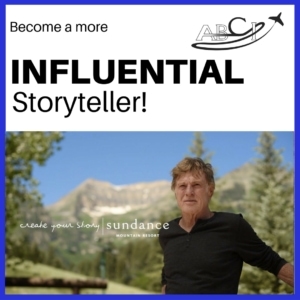 We’re planning a big event in August at Sundance. And we’re planning, of course, the MBA Annual Convention which is in October. So those two big rocks, we’ve already started on. All right, we’ve actually booked a block of hotel rooms for NBAA, for next year because they always run out of hotel rooms.
We’re planning a big event in August at Sundance. And we’re planning, of course, the MBA Annual Convention which is in October. So those two big rocks, we’ve already started on. All right, we’ve actually booked a block of hotel rooms for NBAA, for next year because they always run out of hotel rooms.
John Williams: And we always find out about people who may or may not be our clients that are looking for a hotel room.
Paula Williams: Right, nobody wants to end up homeless and in Las Vegas in 2017. So if you can take care of some of those things early, and even taking the best booths, you have the best selection if you start early.
If you know this is something you’re gonna do, you can’t start early enough. Planning your presentation, are you gonna have a trivia quiz? Are you going to organize your booth differently? Do you need more signage? Do you need less signage? Are you having people trip over things? Do you wanna get rid of the table?
All of those things. If you can start looking early, you can really make a big difference in the amount of planning that you can do and the number of problems you’re going to prevent with some of these big projects. The August Sundance Event that’s gonna be a sales summit for ABCI clients, and with we’re planning three days of guest speakers.
And we need food and lodging, and all of those things at Sundance, which is where, if you don’t know the story of Sundance, it’s a,
Paula Williams: Robert Redford basically wanted to get away from Hollywood, and get some of the writers and directors and actors and other folks away so they could focus on their work, rather than being swept up in the swirl [LAUGH] and the politics of Hollywood.
And that’s really what we wanna do for our clients is get them away from this world of their everyday activity, and really focus in on sales skills which are so important to everything that you do. So if you look at this, and we figure in our big rocks.
These are things that are gonna take a long time to plan. And that we really want to do right, and manage the details of. We had one in August, and one in October. And if we’re looking at the rest of the year, we wanna put something kind of equidistant that we might want to plan a campaign around.
Valentines Day comes to mind. We haven’t solidified that yet, we’re still doing our planning. But we wanna do something in spring or early summer to kind of balance out the year, so that all of our effort is not on the back end, right?
John Williams: Absolutely.
Paula Williams: Okay, so if you put in your big rocks first, then you can figure out how many other big rocks can you do, do you have capacity for?
And where can you put them where it will be the least impact on everybody and isn’t gonna make everybody insane and crazy in the late summer, early fall.
John Williams: And still get everything done.
Paula Williams: [LAUGH] Exactly, okay. So another thing to think about when you’re thinking about your big rocks is your fixed assets.
Fixed assets in your marketing system would be things like your website. If you wanna do a website refresh, or if you want to do a book, or start a podcast, or begin a newsletter. Some of those things are fairly big rocks. And they are marketing assets that can be used year round for different things.
Once we have a podcast, we can use it to advertise some of our smaller campaigns and other things. If we had a newsletter, we could use that to advertise some of our campaigns and things. So your slow times are the best times to fit in those big rocks.
And anything that you want to do in 2017 that is a system or a fairly big project to get started, let’s say you wanna put together a new customer welcome package and you wanna do a prototype. And you wanna find a printer, and you wanna find packaging and all of that stuff.
That’s a big project. So you wanna plan that for a time when you can get that done, put those in as big rocks, right?
John Williams: Yup.
Paula Williams: Nobody’s gonna get all this done at the same time.
John Williams: No, it doesn’t matter how many times you tried, it is not gonna happen at once.
Paula Williams: [LAUGH] Exactly. So you just need to pick a few things, if you’re phase one, if you need more prospecting because you’re not getting enough leads coming in the front door. Then you want to pick one thing in your phase one of your marketing system and say, you know what?
We need a better website. Or you know what? We need a better advertisement in a particular publication, or we need a better call to action. We need an e-book or a tip sheet that people can download. Those are big rocks, and those are things that you can plan around your slow time, so that you can get those done.
If your problem is, okay, we’re getting plenty of leads but none of them are closing, then you wanna pick something out of these two that’s a big rock or big project. And figure out, do we need a better email system that lets us know when people are opening emails?
And do we need a better-
John Williams: CRM.
Paula Williams: CRM, right. Do we need better social media profiles or a more diverse audience on social media? All of those things are big rocks that you can plan around and plan projects for, right? Okay, and then you also want to think in terms of timelines.
So once you have those big rocks, you space them out so that you have your big rocks and then you plan all of your little rocks around your big rocks, right?
John Williams: [LAUGH] Of course, just like the picture.
Paula Williams: Exactly, so let’s say we had our Sundance project up there.
That would be a big long line, and then we’d have all of our little tasks for that, we break that down into we need to make reservations with the hotel. We need to arrange for food, we need to arrange the guest speakers, and we need to figure out what the program is going to be for this or that.
We need to arrange the videographer, and so on. And all of those things are smaller tasks that fit into the timeline of those larger tasks. And we used to call this at Brinklin Cubby we used to call this front loading, where we would do as much work as early as we can ahead of a large project.
And the reason is because there’s always stuff that comes up at the end [LAUGH] that you wouldn’t have thought about. So the more you have done the more time you have at the end to be flexible when something comes up or an opportunity or a crisis or one of those moments happens along, right?
John Williams: You bet, cuz it will.
Paula Williams: It will, absolutely. John’s our event wrangler, and tends to solve all the problems that come up. And so we try to make things as easy as we can. But they’re never quite all that easy, are they?
John Williams: No.
Paula Williams: No. [LAUGH] Yeah, there’s always a few little wrinkles for John to solve at the end.
Okay, you also wanna think in terms of batching, automating, and outsourcing your stuff. So what is there that you can do to lighten your workload so that you’re spending your energy on tasks that are as high on the food chain as you possibly can? So anything that you’re going to do more than once, you wanna automate or batch or outsource, right?
John Williams: And outsource here does not mean over the pond outsourcing.
Paula Williams: Not necessarily, no.
John Williams: We outsource our receptionist and that’s not outside the US.
Paula Williams: Exactly, and Boostability does our search engine optimization. They’re just located in the same town where we can go have lunch with them.
So you wanna have trusted companies, maybe a print shop, other people that you do business with on a regular basis that you can hand things to. So when we’re talking about batching, one of the things we’d like to talk about is the insider circle. On the calendar that our members are getting this month, we have a goal each month that is a group goal.
So we want to help all of our insiders in January build a great marketing funnel, or improve on their existing marketing funnel. And that’s what we’re helping everyone do. And since everyone is working on it together, they can help each other. They can bounce ideas off of each other.
The books that we’re reading and other kinds of things that we’re doing are all about that topic. So that’s one of the ways to batch things and make it make more sense. In February, we’re talking about retargeting strategy, which is another really cool thing that has gotten a lot easier in recent months with technology being what it is.
There’s a lot of folks that have not really done retargeting in the past, so that’s something that we’re doing together to learn about all of the tools out there, all of the pros and cons of the different tools. Different ways to make that work and different ways that it has not worked, and we can learn about that together.
In March, we’re talking about snail mail techniques. So once again, these are big rocks that might be in your plan that you can leverage everybody else’s brains as they’re working on the same thing, right?
John Williams: You bet.
Paula Williams: Okay, so automating. You wanna automate or systematize anything that you’re going to do more than once.
There’s a hilarious project that’s popular on GitHub, the website that hosts all kinds of software for programmers. This project was shared by programmer Nihad Adasab, known as Narkas, right? It consists of a bunch of software scripts with some not safe for work names. Narcas says the scripts came from another programmer.
He tells the story like this. There was a programmer who left for another company, the type of guy that if something, anything requires more than 90 seconds of his time, he writes a script to automate that. The guy left for a new job, his former co-workers were looking through his work and discovered that he had automated all sorts of crazy things including parts of his job, his relationships, and making coffee.
The guy wrote one script that sends a text message, leave at work to his wife, and automatically picks reasons from an array.
John Williams: [LAUGH]
Paula Williams: It describes Narkas. It sends this text anytime there was activity with his login on the company’s computer servers after 9 PM. He wrote another script relating to a customer he didn’t like given the not nice name he chose for the script.
It scans the inbox for an email from the customer that uses words like help, trouble, and sorry and automatically rolls the guy’s database to the last backup and sends the reply, no worries, mate. Be more careful next time.
John Williams: [LAUGH]
Paula Williams: With another script, he automatically fired off an email excuse, like not feeling well, working from home, if he wasn’t at work, and logged into the servers by 8:45 AM.
The best one, he wrote a script that waits 17 seconds and hacks into the coffee machine and orders it to start brewing a latte. The script tells the machine to wait for another 24 seconds before dispensing the latte into a cup, the exact amount of time that it takes to walk from the guy’s desk to the coffee machine.
John Williams: [LAUGH]
Paula Williams: And his co-workers didn’t even know the coffee machine was on the network and hackable.
John Williams: [LAUGH]
Paula Williams: That’s good stuff. We don’t recommend any these things, but the point is there is a lot of stuff that you could automate and most people don’t do enough of it, right?
John Williams: Yeah, I mean, you can automate, as she just said, almost anything, especially a lot of aviation marketing tasks, and if you wonder if you can automate it, just look into it a little bit. You’ll be amazed.
Paula Williams: You will be amazed. And yeah, consider some of those sites like If This, Then That. Or consult with your friendly neighborhood IT professional who can probably help you with some of these things.
So and that might mean just putting a project plan together that you can just pull out of a file. And say, you know what? We just did a great trade show last year. Let’s pull out the plan and recheck all the boxes, make sure we got everything done, change the dates.
Half the work’s already done for you, right?
John Williams: Yep.
Paula Williams: Okay, you might do a referral program or a referral campaign. You can keep all of the letters and all of the cards and all of the files that you used, all the graphics and everything else.
John Williams: Just make sure you change the dates.
Paula Williams: Yeah, you just wanna change the dates and make sure that it’s relevant to the current year or the current month, or whatever. If you did a Halloween campaign last year and you wanna switch it to Valentine’s Day, it’s still pretty simple to do. You’ve got all the cards and the emails and everything set up.
You just need to change the theme a little bit. So it’s a swipe and deploy rather than a start from scratch.
Paula Williams: If you have a great CRM, like Infusionsoft, it will let you set up campaigns or routines for anything that you do frequently having to do with email.
So whenever someone buys a particular product, there’s a set of six emails that goes out with, here’s the tip of the week for this particular product, so that people get the best results from it. So you might have a new customer welcome email sequence, or a campaign when someone has expressed interest in a particular thing, too.
And that’s something you set up once, then it runs automatically, right? So automating. A new toy that I discovered in the last month or so is a thing called ifttt.com, which is basically if this, then that, and it’s kind of a programming nerdy thing. But there is a collection of bots on that page that can help you string together some of your social media tasks.
For example, if you post a picture on Instagram and you use a specific aviation hashtag, you can set up with that. That will take that photo and copy it to your Twitter account and post it there as a native image. Now if you were going to do that by hand, it would take a couple of minutes.
And you can’t really do it on your phone if you’re on the road or whatever. But if you have this bot set up, you do that and it just saves you a ton of time. A lot of the different bots that are set up for marketing. There’s a bot for, I think, 21 different marketing bots that are already set up that are fairly common tools that marketers use.
So that’s a cool thing to look at. So automate all the things, right?
John Williams: Everything possible.
Paula Williams: [LAUGH] Right, delegate and outsource more. Now this can be a disaster [LAUGH] if doesn’t go well.
John Williams: [LAUGH]
Paula Williams: It has been for us, on numerous occasions, where we’ve delegated or outsourced a thing and had something come back that was not what we expected, right?
John Williams: Yeah.
Paula Williams: Right, so a couple of-
John Williams: You just have to keep going till you find somebody that can do it right because otherwise you get so much you can’t do it all.
Paula Williams: Right, and a couple of other things that we can borrow from some of the larger companies that do a lot of delegating and outsourcing are things called key performance indicators, or KPIs.
That sounds really nerdy, but basically it just means how will we know when this project is successful? And you share those KPIs with your vendors. And you say, you know what? Here is what we’re trying to achieve with this. If you can help us achieve this, and when they’re negotiating for the job, you wanna share those KPIs with them, and say, here’s what will make this successful.
And if it means, we want to have x number of people at our event, or we want to be sure that this happens in this particular way. And the more specific and measurable you can be when you set up your KPIs the better, because then everybody knows exactly what’s expected and everybody knows if that’s going to be successful or not.
Another thing that you can do, especially if you’re working with printers or people that are doing your booth graphics or other kinds of things like that, is to have a branding brief. And you have your colors, your fonts, your mission statements, your photo standards, any graphic elements that you typically use in an electronic file and in a document that you can just hand them and say here’s our branding standards,.
Make sure you comply with these. So that they don’t come up with something that’s completely not right, [LAUGH] right?
John Williams: It happens.
Paula Williams: It does, but this gives you a lot more confidence in working with other people. And then the other thing is that you wanna make sure you keep a list and keep them in your CRM, but keep them somewhere, Rolodex, whatever you do, of people that you worked with in the past that you really liked and that did good work for you.
And of course, maybe I should be on that list, right?
John Williams: Right, of course.
Paula Williams: Absolutely, so if we’ve done good work for you and something comes up, we’d love to have a phone call from you when you have a project, and see if there is something that we can do for you.
So, use your aviation marketing calendar and go sell more stuff!
John Williams: America needs the business.
Paula Williams: Right, Zig Zigler, thank you for joining us. Please do subscribe to our podcast, on iTunes, or Google Play, and please do leave us a ring. Thanks for joining us, and we’ll see you next time. Please do also download our calendar template which is available from this page.
Have a great week.
John Williams: See you guys next time, ciao.[SOUND]
Announcer: Thanks for joining us for aviation marketing Hangar Flying, the best place to learn what really works in sales and marketing in the aviation industry. Remember to subscribe on iTunes and leave a rating.
[MUSIC]
var d=document;var s=d.createElement(‘script’); ..



